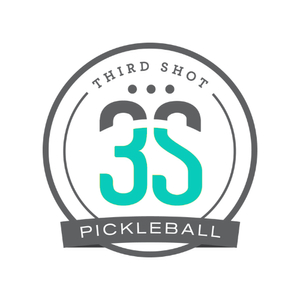This marks the fourth installment in a six-part series where we delve into the Quality Standards. These standards are integral to Canada’s pickleball instructor certification course, a joint effort between Pickleball Canada and Tennis Canada. The originator of the concept, Wayne Elderton, stands as one of Canada’s leading coaching authorities. I would posit that regardless of the sport you impart knowledge in— or even if your teachings occur within a classroom environment— the application of Quality Standards holds the potential for significant benefits.
As we've discussed in previous articles, people participate in pickleball lessons for a wide range of reasons: they want to have fun and get some exercise; they want to build a community of friends that they get to know on and off the court; they want to have fun, be active, and spend most of their time participating, not standing around. But they also want to improve. They want to get better. And this is a key responsibility of any instructor.
So, how do we track improvement? It's not good enough to just assume our players are getting better because they're putting in hours on the court. We need some way to measure changes in performance.
Whether we're talking about serves or returns, drops or drives, volleys, dinks, lobs, or smashes, we are generally working to help our players do better at putting the ball where they want. And if we are working on a player’s technique, it is almost always in the service of the goal of helping them control where they send the ball and how they get it there. Understanding this is useful when thinking about improvement.
When I work with beginning players, we almost always get them to try to rally as a group using the full pickleball court. This is before we've taught them anything about technique, strategy, or even the rules of the game. We ask them to see how many times in a row they can cooperatively hit the ball back and forth over the net. We do this because it gives us a baseline — we can see their starting point. Often, new players can only hit the ball three or four times before somebody misses. This is great! Because if I have done my job well, by the end of the lesson that same group should be able to rally considerably more than three or four in a row. And since we measured at the start and measured again at the end, we are easily able to make a comparison.
This methodology can work with players of all skill levels. You can take a very specific task, give a clear measure as to what counts as success, and then ask players to try to do it. Keep track of how many in a row they can do, what their maximum score is, or even the group’s overall average. Then work on that skill (this is where teaching comes in) and then test them again in the same manner you did the first time. If the number has gone up, they have improved.
This kind of measurement, like any sort of assessment, isn't perfect. Some skills are more challenging to measure and require a more subjective eye. Good decision-making, for example, is a little tougher to track. Psychological skills also usually fall under this category — if you are working with a player on being calm under pressure, it can be harder to measure than how many deep returns they hit in a game.
Generally speaking, however, measuring performance is an effective way to track improvement. It is helpful for the players to see how far they have come and where they still need to work. And it is useful for coaches to get a sense of whether their methods are improving outcomes. Keep in mind that some skills take longer to improve than others, and that you may even see an initial drop in performance as players are working on something new. If you work with the same players on a regular basis, you may want to do short, medium, and long-term assessments.
The point is, if people are putting in the time and effort in pickleball lessons, they should be getting better. And we will only know that they are getting better if we track their performance. So next time you have some players, pick a specific task and measure how well they do it. Trust yourself and your coaching, and then run them through the assessment again. See what happens. Your players are with you for many reasons, but improvement is definitely one of them.





